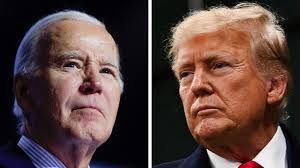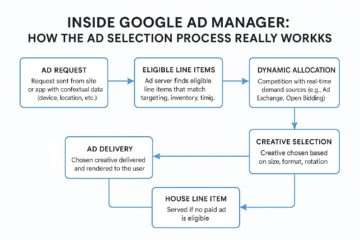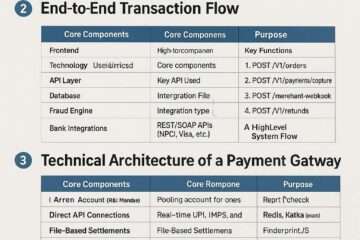
Amazon has made a significant move in the connected TV (CTV) advertising space by introducing “private auctions” to its Prime Video inventory, challenging the long-standing norm of fixed cost-per-thousand (CPM) pricing. This new deal structure, quietly rolled out in recent weeks, allows advertisers to purchase Prime Video ad inventory through dynamic pricing, enabling real-time bid optimization and potentially lowering campaign costs by up to 20%. This shift brings CTV advertising closer to the real-time bidding (RTB) model commonly seen in other digital advertising ecosystems, offering greater flexibility for marketers while maximizing yield for Amazon. Below, we explore the details of this change, its implications, and what it means for the future of CTV advertising.
What Are Private Auctions?
Private auctions represent a new programmatic buying option for Prime Video inventory, distinct from traditional private marketplace (PMP) deals or guaranteed (PG) agreements. Unlike PMPs, which rely on fixed CPMs and offer limited flexibility, or PG deals that cater to large upfront commitments, private auctions allow advertisers to bid dynamically within a defined price range. Marketers set a floor and ceiling for their bids, and Amazon’s demand-side platform (DSP) optimizes in real time to secure available impressions within those bounds. This structure reduces reliance on rigid pricing, giving buyers more control over costs while enabling Amazon to better manage inventory yield.
Key Features of Private Auctions
- Dynamic Pricing: Advertisers can adjust bids in real time, moving away from fixed CPMs to a model that reflects market demand for impressions.
- Bid Modifiers: Amazon DSP’s bid modifiers allow granular optimization based on factors like location, audience segment, and device type, enhancing campaign efficiency.
- Accessibility: Private auctions target mid-market and long-tail buyers, making Prime Video inventory more accessible to smaller or performance-driven agencies.
- Fewer Guarantees: In exchange for lower costs, private auctions offer fewer assurances compared to PMPs or PG deals, such as guaranteed impression volumes or specific placements.
Why This Matters: Breaking the Fixed CPM Norm
Fixed CPM pricing has been a cornerstone of the CTV advertising ecosystem, providing predictability for both buyers and sellers. However, this rigidity often limits opportunities for cost optimization, particularly for smaller agencies or those prioritizing performance over scale. Amazon’s introduction of private auctions disrupts this model by injecting flexibility into the CTV buying process. According to James Duffy, head of client services and strategy at Plug Media, private auctions enable agencies to “access Prime Video and bid intelligently,” potentially reducing CPMs by 10% to 20% when used alongside PMP deals. This cost efficiency is particularly appealing for performance-driven shops that lack the budgets for large, guaranteed commitments.
Benefits for Advertisers
- Cost Savings: The ability to bid dynamically allows marketers to secure impressions at lower costs, with reported savings of up to 20% compared to fixed-rate deals.
- Enhanced Insights: By combining private auctions with PMP deals, agencies can gain valuable data on audience behavior and campaign performance, informing future strategies.
- Increased Access: Smaller agencies and mid-market buyers, previously priced out of Prime Video’s premium inventory, can now participate in a more cost-effective way.
- Real-Time Optimization: Bid modifiers and dynamic pricing enable advertisers to adjust campaigns on the fly, targeting high-value audiences or devices more effectively.
Benefits for Amazon
- Maximized Yield: Dynamic pricing allows Amazon to optimize inventory pricing in real time, ensuring impressions are sold at the highest possible value based on demand.
- Broader Buyer Base: Private auctions attract a wider range of advertisers, from small performance agencies to mid-tier brands, expanding Amazon’s ad revenue potential.
- Competitive Edge: By offering a more flexible buying model, Amazon positions itself as a leader in CTV innovation, potentially drawing advertisers away from competitors like Netflix or Hulu.
How Private Auctions Fit into the CTV Ecosystem
The CTV advertising market has grown rapidly, driven by the shift from linear TV to streaming platforms like Prime Video. However, the reliance on fixed CPMs has often made CTV less agile compared to other programmatic channels, such as display or mobile advertising. Private auctions bridge this gap by bringing CTV closer to real-time bidding, a model that has long dominated digital advertising. While not a full RTB system—private auctions still operate within a controlled environment with pre-selected buyers—they represent a step toward a more dynamic, data-driven CTV marketplace.
Comparison to Existing Deal Structures
- Guaranteed Deals (PG): These cater to large advertisers with significant budgets, offering guaranteed impressions and premium placements at fixed CPMs. They prioritize certainty over cost efficiency.
- Private Marketplaces (PMPs): PMPs provide more flexibility than PG deals but still rely on fixed pricing and limited inventory. They are ideal for advertisers seeking a balance between control and scale.
- Private Auctions: These offer the most flexibility, with dynamic pricing and real-time optimization, but come with fewer guarantees, making them suitable for performance-focused campaigns.
The Role of Amazon DSP
Amazon’s DSP plays a central role in enabling private auctions, providing the tools needed for real-time bidding and optimization. Features like bid modifiers allow advertisers to fine-tune campaigns based on granular data, such as geographic location or device type. This level of control is particularly valuable in a CTV environment, where audience targeting and contextual relevance are critical to campaign success.
Industry Reactions and Early Adoption
Early feedback from industry experts highlights the potential of private auctions to reshape CTV buying. James Duffy of Plug Media emphasized the value of dynamic pricing, noting that fixed CPMs often limit opportunities to “create value” for clients. By allowing agencies to bid intelligently and combine private auctions with PMP deals, Amazon is enabling more efficient campaigns without sacrificing access to premium inventory. Smaller agencies, in particular, see private auctions as a game-changer, as they can now compete for Prime Video ad space without committing to high fixed rates.
However, some industry observers caution that private auctions may not suit every advertiser. Large brands with significant budgets may prefer the predictability of PG deals, while others may be wary of the reduced guarantees associated with private auctions. The success of this model will depend on Amazon’s ability to balance flexibility with reliability, ensuring advertisers achieve consistent results.
The Bigger Picture: A Move Toward Real-Time Bidding
Amazon’s private auctions are part of a broader trend toward real-time bidding in CTV advertising. As streaming platforms compete for ad dollars, the ability to offer flexible, data-driven buying options will be a key differentiator. While private auctions are not a full RTB system, they represent a significant step in that direction, aligning CTV with the programmatic efficiencies of other digital channels. This shift could accelerate the migration of ad budgets from traditional TV to streaming, as advertisers gain more control over costs and targeting.
Challenges and Considerations
- Learning Curve: Advertisers new to dynamic bidding may need time to master Amazon DSP’s tools, such as bid modifiers, to maximize campaign performance.
- Inventory Quality: With fewer guarantees, there’s a risk that private auction inventory may include less desirable placements, requiring careful monitoring by buyers.
- Market Adoption: The success of private auctions will depend on widespread adoption by advertisers and Amazon’s ability to scale the program without compromising inventory value.
What’s Next for Prime Video and CTV Advertising?
Amazon’s introduction of private auctions signals a bold move to redefine CTV advertising, prioritizing flexibility and efficiency in a rapidly evolving market. As the program expands—currently in testing with select buyers—it could set a new standard for how streaming platforms monetize their inventory. Competitors like Netflix, Hulu, and Disney+ may feel pressure to adopt similar models, further accelerating the shift toward programmatic CTV buying.
For advertisers, private auctions offer an opportunity to access Prime Video’s premium audience at a lower cost, provided they’re willing to embrace dynamic pricing and real-time optimization. For Amazon, the move strengthens its position as a leader in CTV innovation, with the potential to capture a larger share of the growing streaming ad market. As the industry watches closely, private auctions could mark the beginning of a new era in CTV advertising—one where flexibility, data, and efficiency take center stage.




























































